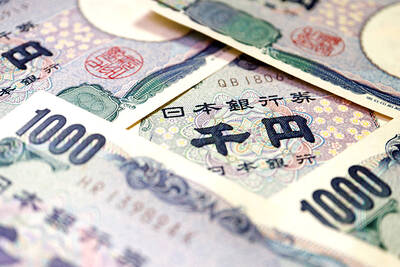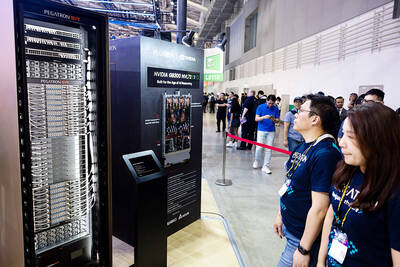The US dollar on Friday gained against the euro for the first week since the middle of June after data showed a strong uptick in US business activity, while the single currency was held down as this month’s batch of European business surveys pointed to a stuttering economic recovery.
US business activity this month snapped back to the highest since early last month as companies in the manufacturing and services sectors saw a resurgence in new orders even as new COVID-19 cases remain stubbornly high across the country.
“The Markit PMI [purchasing managers’ index] flash readings show the US is outperforming Europe,” Oanda Corp senior market analyst Edward Moya said.
The data contrasted with weakness in the eurozone, as the pent-up demand unleashed last month by the easing of COVID-19 lockdowns dwindled.
“Clearly the PMI numbers this morning suggest that Europe is losing a little momentum here and that we’re seeing some turbulence in other areas of the global economy. So that is weighing on the performance gap between the US and its major counterparts,” Cambridge Global Payments chief market strategist Karl Schamotta said.
The US dollar index against a basket of major currencies rose 0.4 percent to 93.24, rising 0.1 percent for the week.
In Taipei on Friday, the New Taiwan dollar rose against the greenback, gaining NT$0.010 to close at NT$29.512, rising 0.1 percent from last week.
The euro dipped to a one-week low of US$1.175 against the greenback earlier, before rising back to US$1.179, down 0.61 percent on the day and inching down 0.08 percent for the week.
The greenback escaped a ninth consecutive weekly decline.
The recovery in the US dollar began on Wednesday after the US central bank’s rate-setting Federal Open Market Committee released minutes from its last meeting, the tone of which was more dovish than expected.
The minutes prompted US dollar bears to buy into the heavily shorted currency, fueling its biggest one-day surge in more than two months.
“You’re seeing a bit of an unwind in the short dollar trade that had gained so much momentum in the last couple months,” Schamotta said.
Additional reporting by CNA, with staff writer

AI TALENT: No financial details were released about the deal, in which top Groq executives, including its CEO, would join Nvidia to help advance the technology Nvidia Corp has agreed to a licensing deal with artificial intelligence (AI) start-up Groq, furthering its investments in companies connected to the AI boom and gaining the right to add a new type of technology to its products. The world’s largest publicly traded company has paid for the right to use Groq’s technology and is to integrate its chip design into future products. Some of the start-up’s executives are leaving to join Nvidia to help with that effort, the companies said. Groq would continue as an independent company with a new chief executive, it said on Wednesday in a post on its Web

RESPONSE: The Japanese Ministry of Finance might have to intervene in the currency markets should the yen keep weakening toward the 160 level against the US dollar Japan’s chief currency official yesterday sent a warning on recent foreign exchange moves, after the yen weakened against the US dollar following Friday last week’s Bank of Japan (BOJ) decision. “We’re seeing one-directional, sudden moves especially after last week’s monetary policy meeting, so I’m deeply concerned,” Japanese Vice Finance Minister for International Affairs Atsushi Mimura told reporters. “We’d like to take appropriate responses against excessive moves.” The central bank on Friday raised its benchmark interest rate to the highest in 30 years, but Bank of Japan Governor Kazuo Ueda chose to keep his options open rather than bolster the yen,

Even as the US is embarked on a bitter rivalry with China over the deployment of artificial intelligence (AI), Chinese technology is quietly making inroads into the US market. Despite considerable geopolitical tensions, Chinese open-source AI models are winning over a growing number of programmers and companies in the US. These are different from the closed generative AI models that have become household names — ChatGPT-maker OpenAI or Google’s Gemini — whose inner workings are fiercely protected. In contrast, “open” models offered by many Chinese rivals, from Alibaba (阿里巴巴) to DeepSeek (深度求索), allow programmers to customize parts of the software to suit their

Global server shipments are expected to surge to 15 million units next year, from 4 million units this year, with artificial intelligence (AI) servers accounting for about 30 percent, driven by massive capital spending by major cloud service providers, the Market Intelligence and Consulting Institute (MIC) said on Thursday last week. Major cloud service providers — including Google’s parent company Alphabet Inc, Microsoft Corp, Amazon.com Inc and Meta Platforms Inc — are projected to budget US$450 million for capital expenditure next year, up from US$400 million this year, MIC ICT [information and communications technology] Industry Research Center director Edward Lin